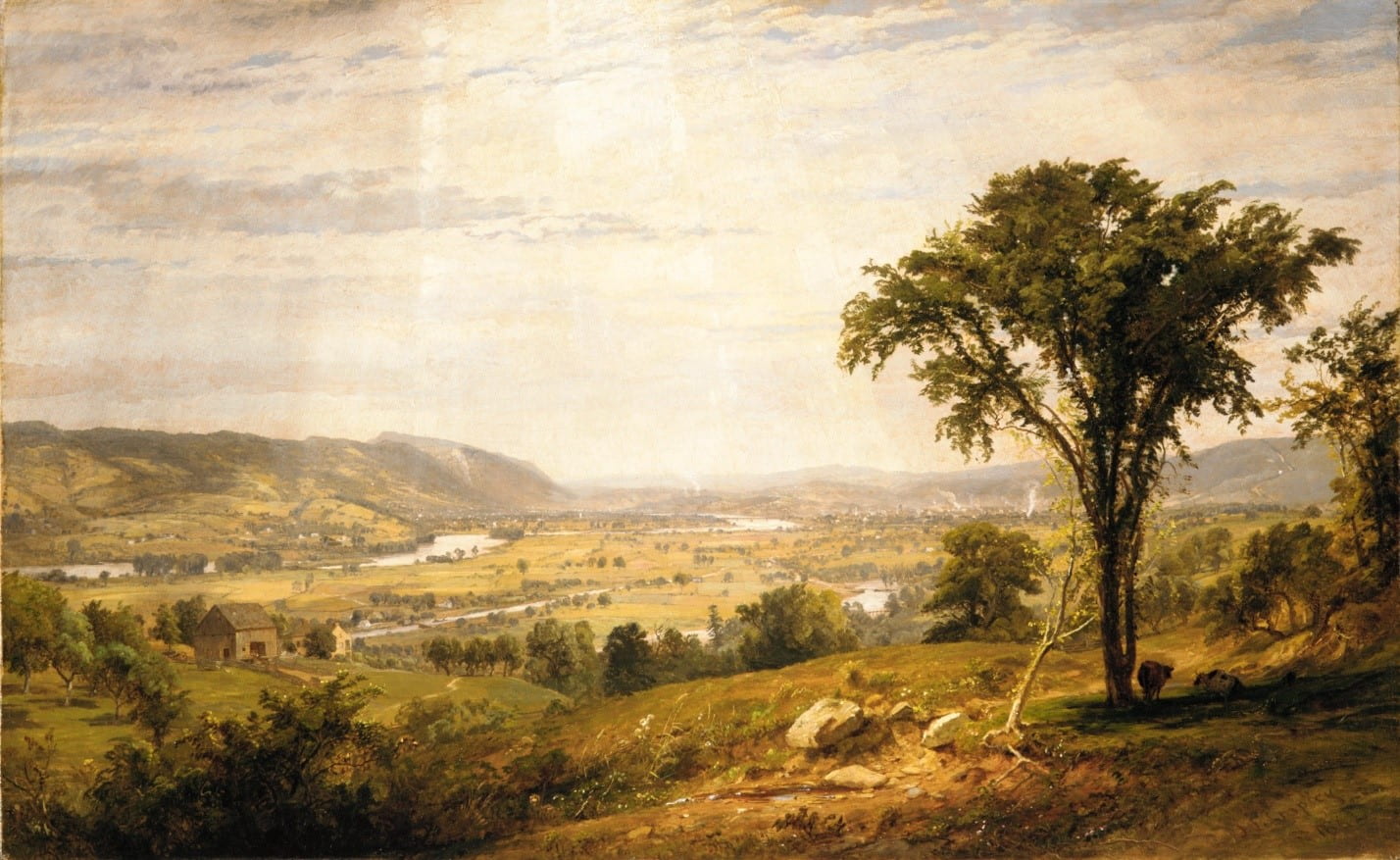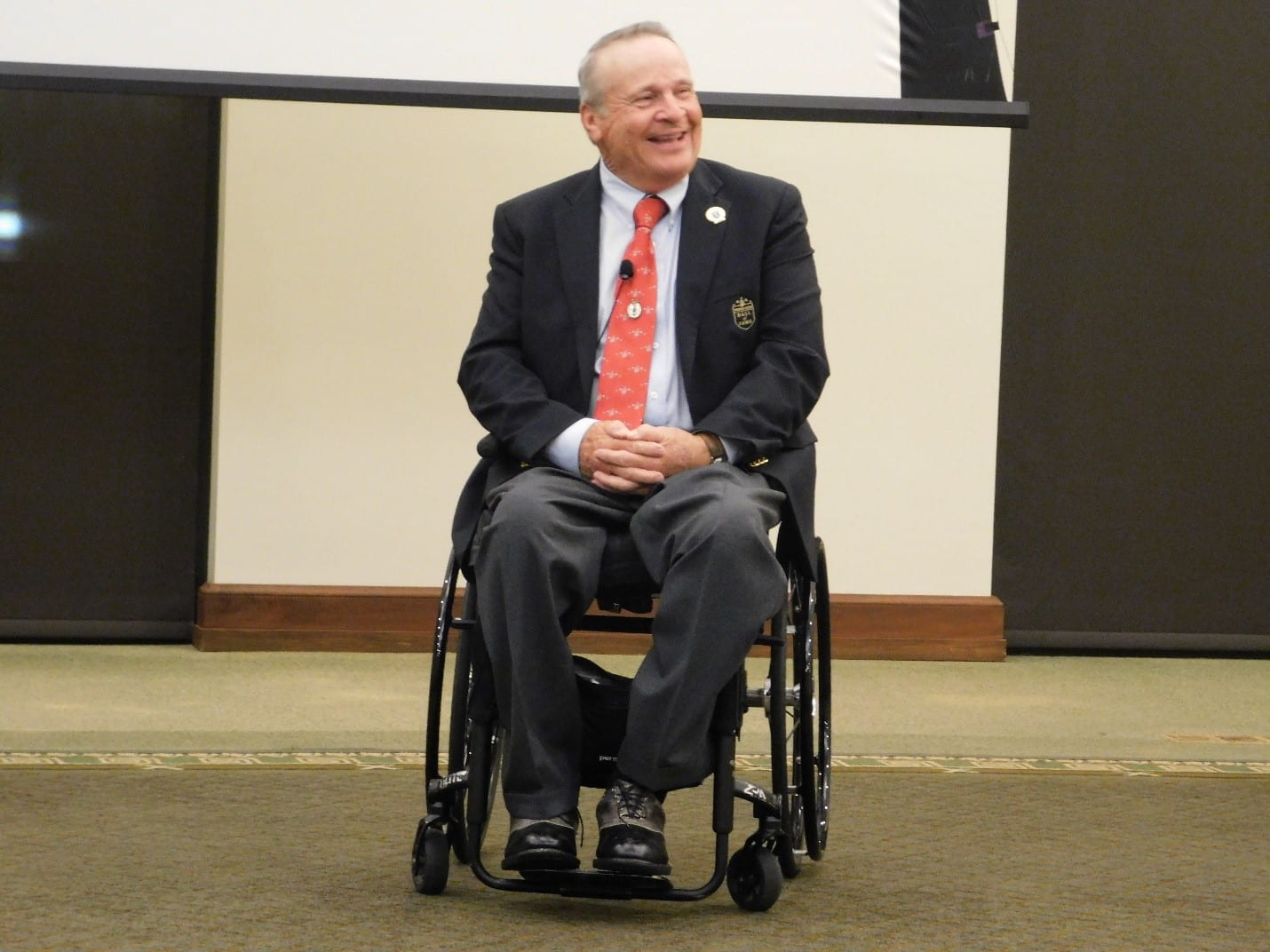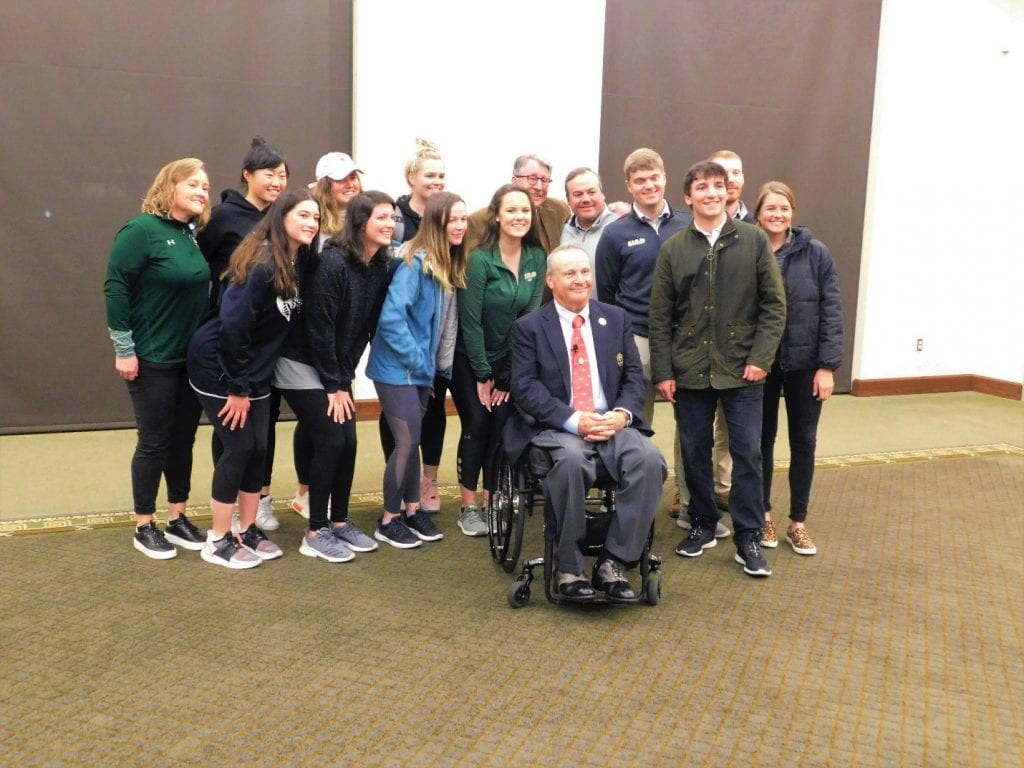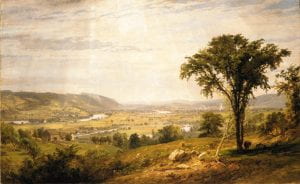
On Monday, March 9th, the Institute for Human Rights co-sponsored an event alongside College of Arts & Sciences and Abroms-Engel Institute for the Visual Arts (AEIVA) to present a panel discussion with Dr. Deidra Suwanee Dees (Director/Tribal Archivist – Poarch Band of Creek Indians), Dr. Tina Kempin Reuter (Director – Institute for Human Rights, UAB), Oakleigh Pinson (Guest Co-Curator – Focus IV Exhibition, AEIVA), and moderator John Fields (Senior Director – AEIVA). During their discussion, they addressed the Native erasure from American art and pathways to greater representation.
The discussion began with mention of Manifest Destiny, which were the events that led to the removal of Natives throughout North America. This effort was influenced by the ‘doctrine of discovery’ that painted non-Christians as pagans and, thus, targets of oppression. The Indian Removal Act of 1830 affected tribes throughout the Southeast, namely the Poarch Creek Indians who are the only federally recognized Native tribe in the state of Alabama.
Thus, many works of art in U.S. museums do not include depictions of Natives. In contrast, many paintings of the American frontier include landscapes without people, although sometimes incorporating wildlife, which conveys the message that this land was simply there for the taking. These portrayals also hide behind the altered and destroyed scared sites that were once home to millions of Natives.
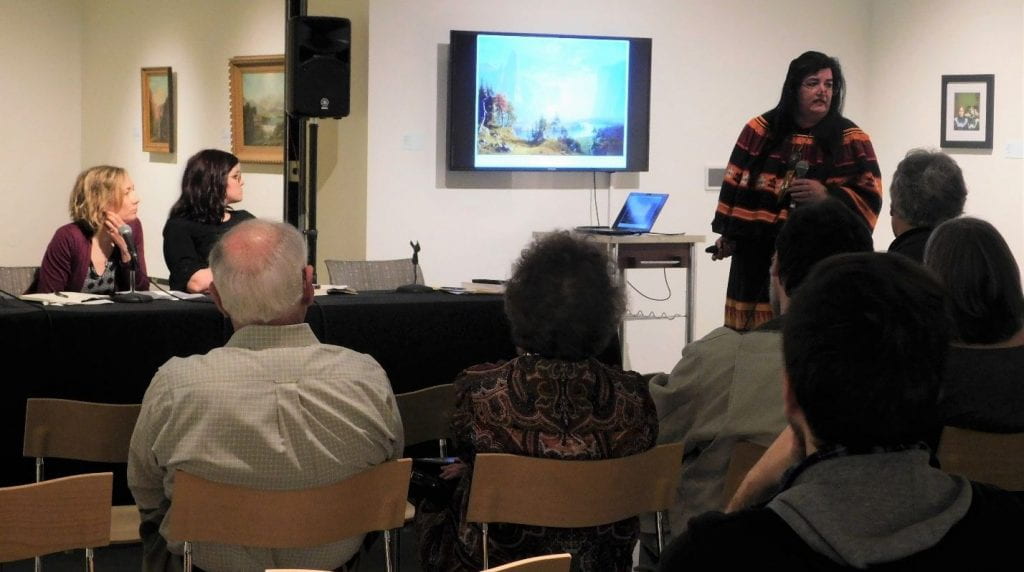
Such treatment has resulted in harsh living conditions where nearly a quarter of the U.S. Native population reside on tribal lands riddled with unemployment, inadequate housing, and limited facilities. These conditions serve as a harvest ground for poor access to resources that translate to health disparities related to heart disease, suicide, tuberculosis, etc. Native women are particularly at-risk in these harsh conditions because thousands every year go missing or are found murdered, thus inspiring the #AmINext awareness campaign in Canada.
During the Q&A segment, an audience member asked if this type of art could be considered propaganda. Dr. Dees suggested that suppression of art is a red flag because it limits expression, although she then claimed that art can also be created to facilitate social change. The conversation then evolved into a discussion about film depictions of Natives and the involvement of indigenous peoples in the United Nations. These sentiments centered on the general theme that Native representation is not only missing in art but also popular culture and politics.
Ultimately, the erasure of Native perspectives whitewashes what is to be told and understood. As such, it is imperative these wrongs are corrected through fair representation of Natives in the media and political arena. Recognizing the rights of indigenous peoples not only brings us closer to the full realization of human rights but also prevents history from painting with a broad brush.
